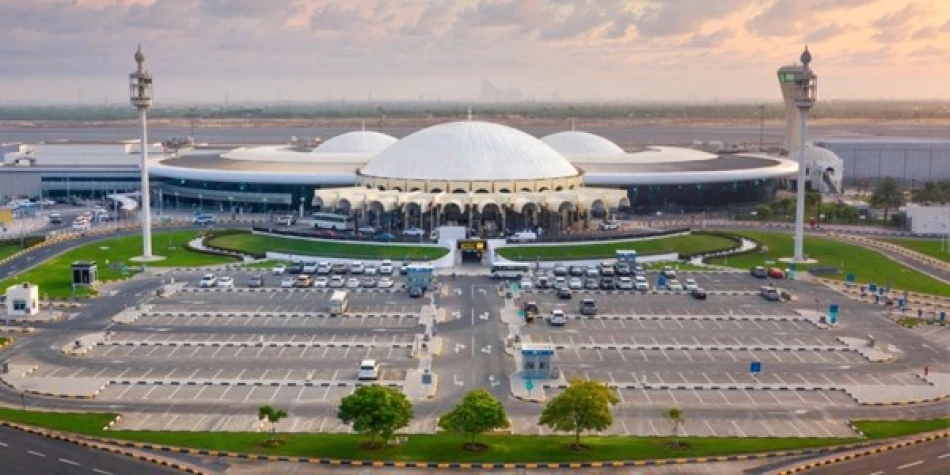
Soaring Passenger Traffic at Sharjah Airport: 9.1 Million Travelers in H1, a 10% Growth Surge
Sharjah Airport Emerges as UAE's Rising Aviation Hub with 10% Passenger Growth
Sharjah International Airport has positioned itself as a formidable competitor in the UAE's aviation landscape, recording impressive operational gains in the first half of 2025. With passenger traffic surging 10% to 9.11 million travelers and ambitious expansion plans targeting 25 million annual passengers by 2027, the airport is challenging the dominance of Dubai and Abu Dhabi hubs while capitalizing on the region's post-pandemic travel recovery.
Strong Performance Across All Metrics
The airport's comprehensive growth story extends beyond passenger numbers. Aircraft movements increased by 4.3% to 54,950 operations, while cargo handling achieved a record 6.36% growth, processing 102.43 tons of freight. This balanced expansion across passenger, flight, and cargo operations demonstrates the airport's evolving role as a multi-modal transportation hub.
The 10% passenger growth significantly outpaces global aviation recovery trends, where many airports are still working to reach pre-2019 levels. This performance suggests Sharjah is not merely recovering but actively gaining market share in the competitive Gulf aviation sector.
Strategic Positioning in the UAE Aviation Ecosystem
Challenging the Big Two
While Dubai International and Abu Dhabi International dominate UAE aviation, Sharjah's growth trajectory reflects a broader regional strategy. The airport serves as a cost-effective alternative for budget carriers and regional routes, filling a crucial gap in the UAE's aviation infrastructure.
Ali Salem Al Midfa, Chairman of Sharjah Airport Authority, emphasized the airport's ambition to rank among the top five regional airports. This goal positions Sharjah as a serious contender in the Middle East's aviation hierarchy, particularly as regional travel demand continues expanding.
Capacity Expansion and Infrastructure Investment
The ongoing expansion projects represent a significant bet on sustained growth. Increasing capacity to 25 million passengers annually by 2027 would triple the airport's current throughput, requiring substantial infrastructure investments in terminals, runways, and support facilities.
This expansion timeline aligns with the UAE's broader economic diversification efforts and positions Sharjah to capture growth from emerging markets in South Asia, Africa, and Central Asia—regions where cost-sensitive travel demand is rapidly expanding.
Market Implications and Competitive Dynamics
Low-Cost Carrier Hub Strategy
Sharjah's growth model mirrors successful secondary airports globally, such as London Stansted or Chicago Midway, which carved out niches by serving budget airlines and regional routes. The airport's partnership with Air Arabia, the region's largest low-cost carrier, provides a stable foundation for continued expansion.
This strategy becomes increasingly relevant as Middle Eastern travelers become more price-conscious and regional connectivity improves. The airport's focus on operational efficiency and cost-effectiveness appeals to airlines seeking alternatives to premium hubs.
Regional Connectivity and Economic Impact
The airport's expanding route network strengthens Sharjah's position as a business and tourism destination. Unlike Dubai's focus on long-haul premium traffic, Sharjah targets regional connectivity, serving markets often overlooked by larger hubs.
This approach supports the emirate's economic diversification strategy, attracting businesses and tourists seeking alternatives to Dubai's high-cost environment while maintaining access to UAE's strategic location and infrastructure.
Future Outlook and Challenges
Sharjah Airport's aggressive expansion plans face several challenges. Regional competition remains intense, with every Gulf state investing heavily in aviation infrastructure. Additionally, the airport must balance growth with operational efficiency, ensuring service quality doesn't deteriorate as passenger volumes increase.
However, the airport's consistent performance and strategic positioning suggest strong fundamentals. The focus on sustainable practices and smart services aligns with global aviation trends, while the 2027 capacity target provides a clear growth roadmap.
The airport's success reflects broader shifts in regional aviation, where secondary hubs are gaining prominence by serving specific market segments. As the UAE continues positioning itself as a global aviation hub, Sharjah's growth story demonstrates that success doesn't require competing directly with mega-hubs—sometimes, finding the right niche proves more effective.
Most Viewed News

 Layla Al Mansoori
Layla Al Mansoori






